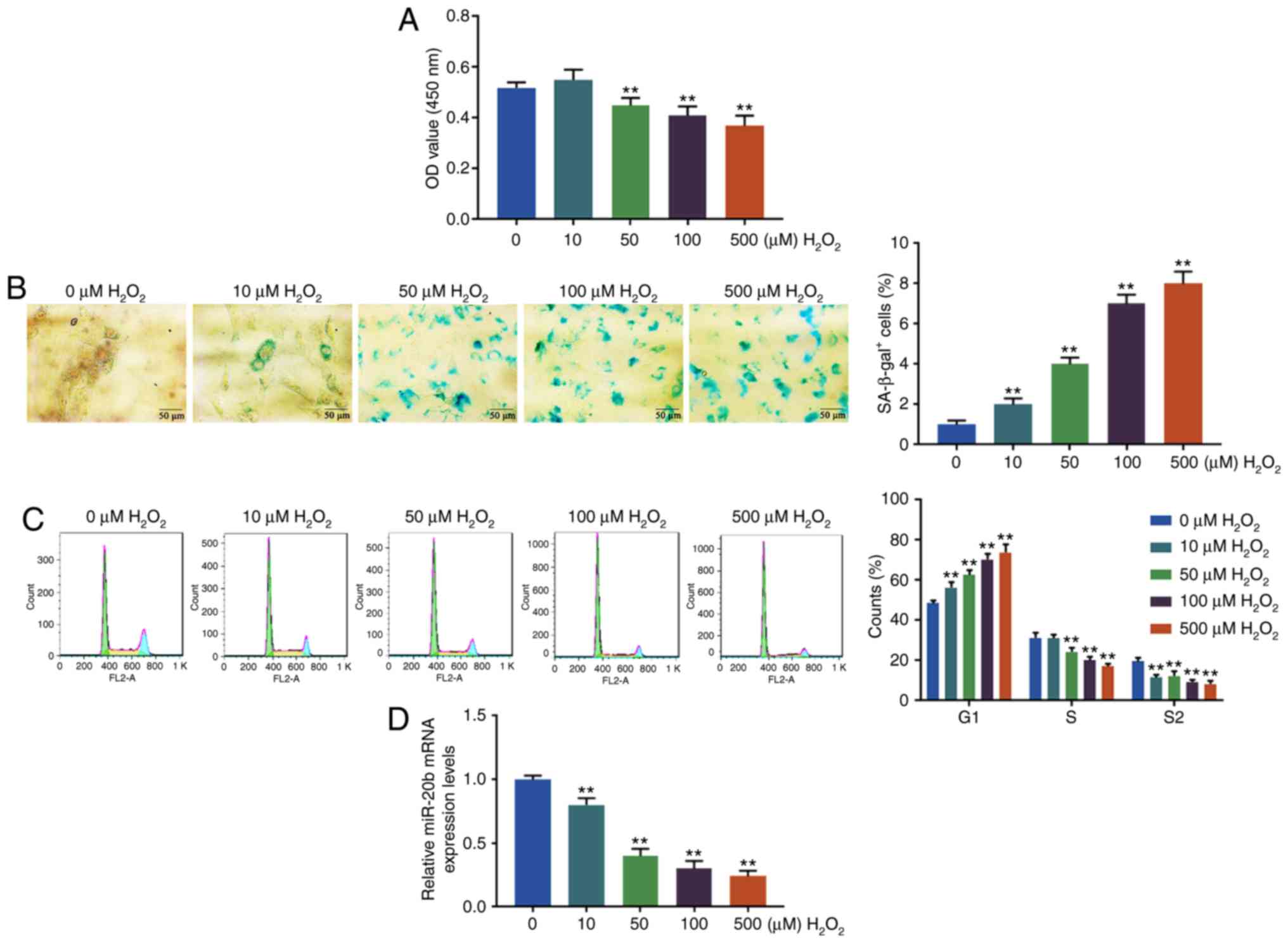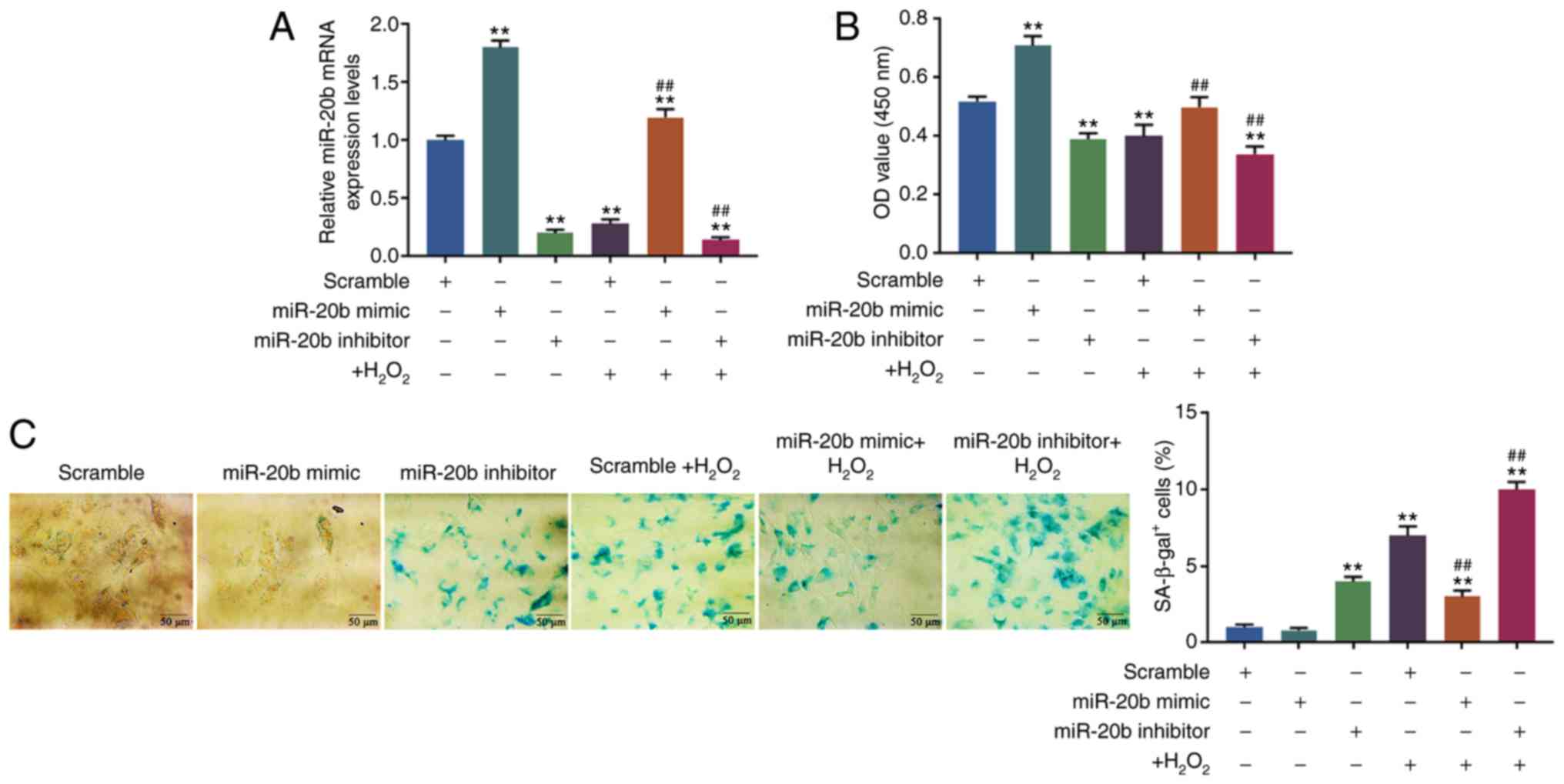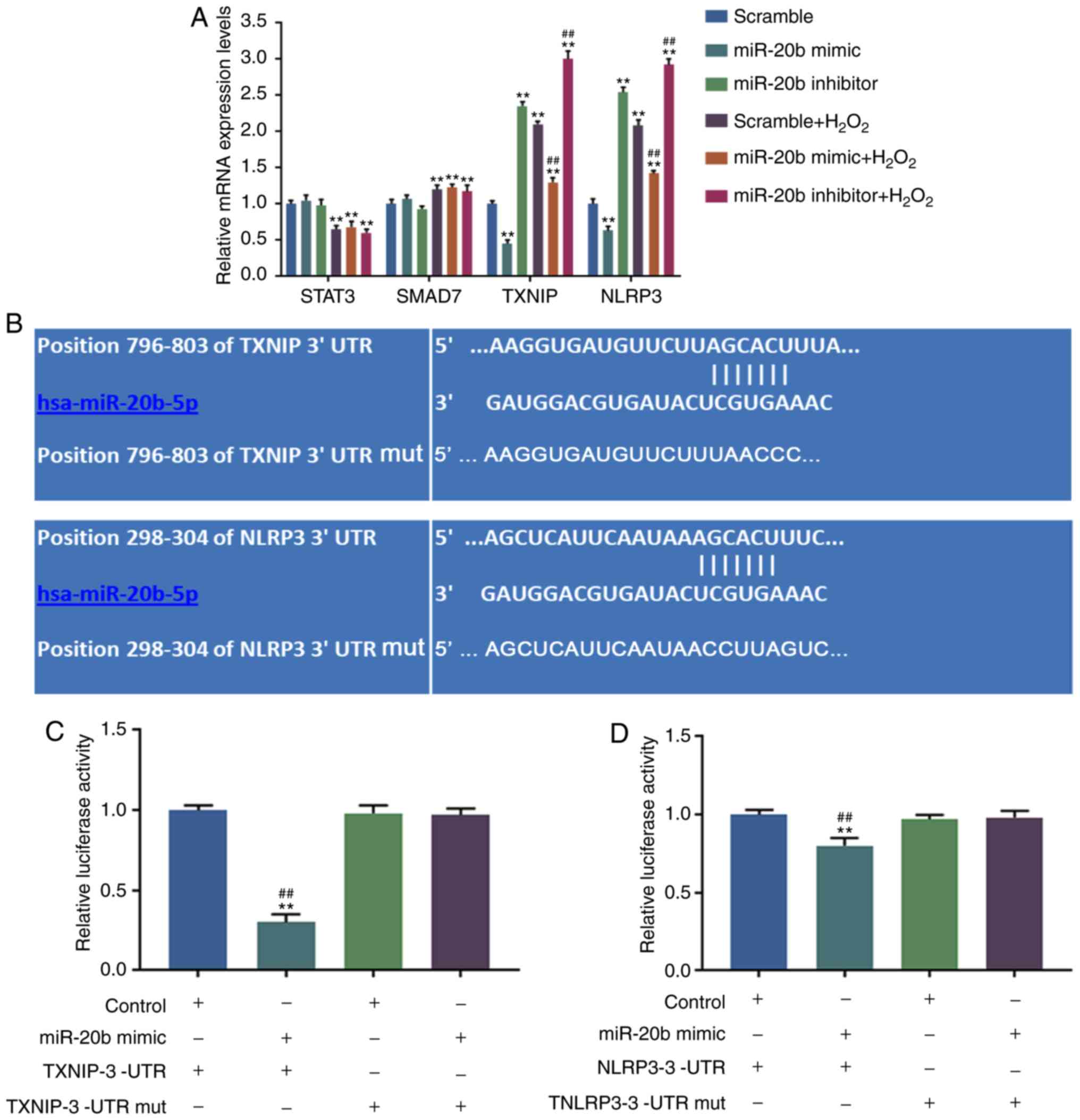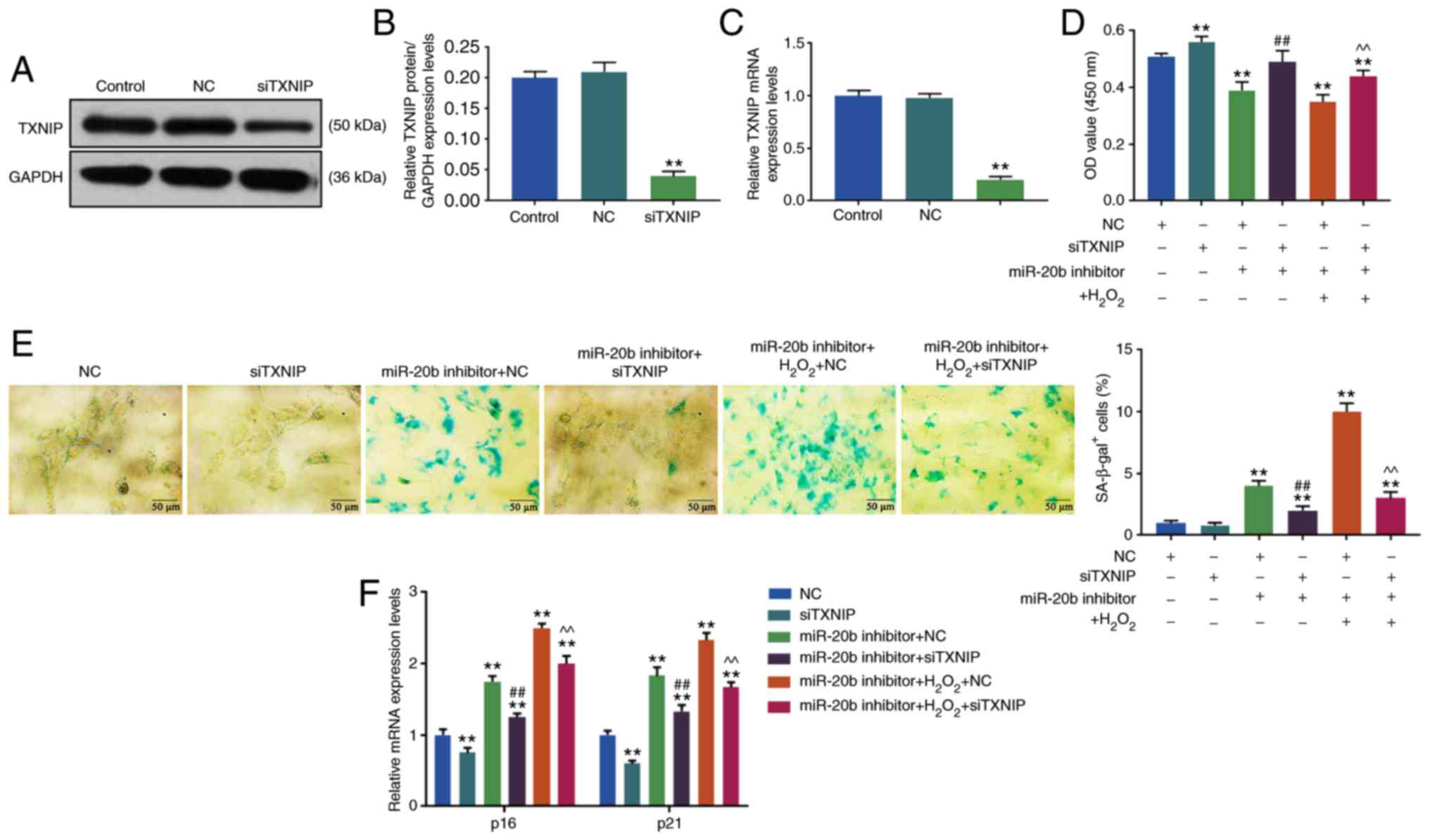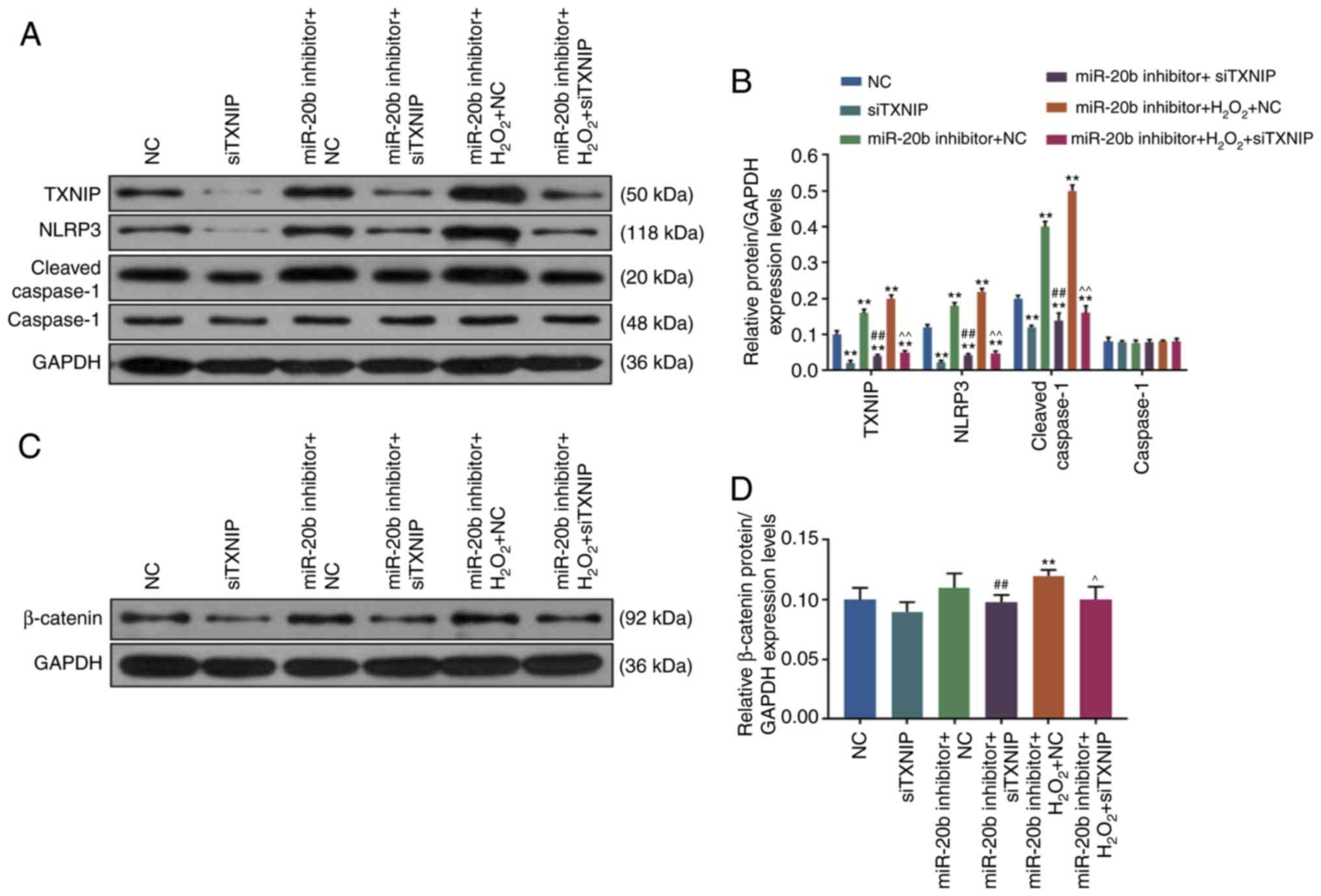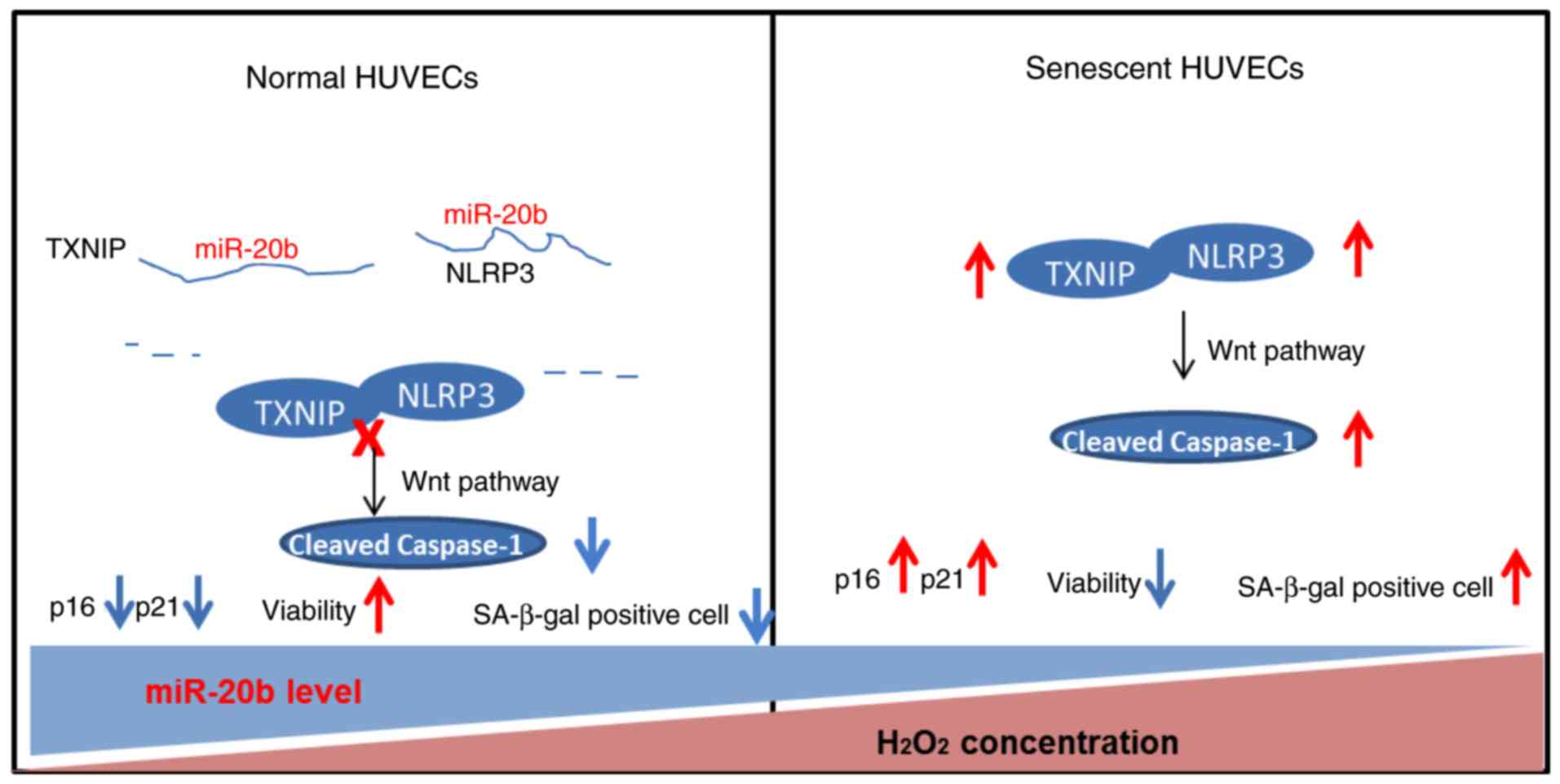|
1
|
Mitchell SJ, Scheibye-Knudsen M, Longo DL
and de Cabo R: Animal models of aging research: Implications for
human aging and age-related diseases. Annu Rev Anim Biosci.
3:283–303. 2015. View Article : Google Scholar : PubMed/NCBI
|
|
2
|
Wu IC, Lin CC and Hsiung CA: Emerging
roles of frailty and inflammaging in risk assessment of age-related
chronic diseases in older adults: The intersection between aging
biology and personalized medicine. Biomedicine (Taipei). 5:12015.
View Article : Google Scholar
|
|
3
|
Thijssen DH, Carter SE and Green DJ:
Arterial structure and function in vascular ageing: Are you as old
as your arteries? J Physiol. 594:2275–2284. 2016. View Article : Google Scholar :
|
|
4
|
Maeda M, Hayashi T, Mizuno N, Hattori Y
and Kuzuya M: Intermittent high glucose implements stress-induced
senescence in human vascular endothelial cells: Role of superoxide
production by NADPH oxidase. PLoS One. 10:e01231692015. View Article : Google Scholar : PubMed/NCBI
|
|
5
|
Su JB: Vascular endothelial dysfunction
and pharmacological treatment. World J Cardiol. 7:719–741. 2015.
View Article : Google Scholar : PubMed/NCBI
|
|
6
|
Donato AJ, Morgan RG, Walker AE and
Lesniewski LA: Cellular and molecular biology of aging endothelial
cells. J Mol Cell Cardiol. 89:122–135. 2015. View Article : Google Scholar : PubMed/NCBI
|
|
7
|
Yang S, Mi X, Chen Y, Feng C, Hou Z, Hui R
and Zhang W: MicroRNA-216a induces endothelial senescence and
inflammation via Smad3/IKBα pathway. J Cell Mol Med. 22:2739–2749.
2018. View Article : Google Scholar : PubMed/NCBI
|
|
8
|
Gao Q, Chen K, Gao L, Zheng Y and Yang YG:
Thrombospondin-1 signaling through CD47 inhibits cell cycle
progression and induces senescence in endothelial cells. Cell Death
Dis. 7:e23682016. View Article : Google Scholar : PubMed/NCBI
|
|
9
|
Dangwal S and Thum T: microRNA
therapeutics in cardiovascular disease models. Annu Rev Pharmacol
Toxicol. 54:185–203. 2014. View Article : Google Scholar
|
|
10
|
Xue Y, Wei Z, Ding H, Wang Q, Zhou Z,
Zheng S, Zhang Y, Hou D, Liu Y, Zen K, et al: MicroRNA-19b/221/222
induces endothelial cell dysfunction via suppression of PGC-1α in
the progression of atherosclerosis. Atherosclerosis. 241:671–681.
2015. View Article : Google Scholar : PubMed/NCBI
|
|
11
|
Liu CW, Sung HC, Lin SR, Wu CW, Lee CW,
Lee IT, Yang YF, Yu IS, Lin SW, Chiang MH, et al: Resveratrol
attenuates ICAM-1 expression and monocyte adhesiveness to
TNF-α-treated endothelial cells: Evidence for an anti-inflammatory
cascade mediated by the miR-221/222/AMPK/p38/NF-κB pathway. Sci
Rep. 7:446892017. View Article : Google Scholar
|
|
12
|
Schober A, Nazari-Jahantigh M, Wei Y,
Bidzhekov K, Gremse F, Grommes J, Megens RT, Heyll K, Noels H,
Hristov M, et al: MicroRNA-126-5p promotes endothelial
proliferation and limits atherosclerosis by suppressing Dlk1. Nat
Med. 20:368–376. 2014. View Article : Google Scholar : PubMed/NCBI
|
|
13
|
Xiao D, Hu Y, Fu Y, Wang R, Zhang H, Li M,
Li Z, Zhang Y, Xuan L, Li X, et al: Emodin improves glucose
metabolism by targeting microRNA-20b in insulin-resistant skeletal
muscle. Phytomedicine. 59:1527582019. View Article : Google Scholar : PubMed/NCBI
|
|
14
|
Yamakuchi M and Hashiguchi T: Endothelial
cell aging: How miRNAs contribute? J Clin Med. 7:pii: E170. 2018.
View Article : Google Scholar : PubMed/NCBI
|
|
15
|
Livak KJ and Schmittgen TD: Analysis of
relative gene expression data using real-time quantitative PCR and
the 2(-Delta Delta C(T)) method. Methods. 25:402–408. 2001.
View Article : Google Scholar
|
|
16
|
Lin YJ, Zhen YZ, Wei J, Liu B, Yu ZY and
Hu G: Effects of Rhein lysinate on H2O2-induced cellular senescence
of human umbilical vascular endothelial cells. Acta Pharmacol Sin.
32:1246–1252. 2011. View Article : Google Scholar : PubMed/NCBI
|
|
17
|
Mitsumoto A, Takanezawa Y, Okawa K,
Iwamatsu A and Nakagawa Y: Variants of peroxiredoxins expression in
response to hydroperoxide stress. Free Radic Biol Med. 30:625–635.
2001. View Article : Google Scholar : PubMed/NCBI
|
|
18
|
Bulterijs S, Hull RS, Björk VC and Roy AG:
It is time to classify biological aging as a disease. Front Genet.
6:2052015. View Article : Google Scholar : PubMed/NCBI
|
|
19
|
Gems D: The aging-disease false dichotomy:
Understanding senescence as pathology. Front Genet. 6:2122015.
View Article : Google Scholar : PubMed/NCBI
|
|
20
|
Ogrodnik M, Miwa S, Tchkonia T, Tiniakos
D, Wilson CL, Lahat A, Day CP, Burt A, Palmer A, Anstee QM, et al:
Cellular senescence drives age-dependent hepatic steatosis. Nat
Commun. 8:156912017. View Article : Google Scholar : PubMed/NCBI
|
|
21
|
Childs BG, Durik M, Baker DJ and van
Deursen JM: Cellular senescence in aging and age-related disease:
From mechanisms to therapy. Nat Med. 21:1424–1435. 2015. View Article : Google Scholar : PubMed/NCBI
|
|
22
|
Garrido AM and Bennett M: Assessment and
consequences of cell senescence in atherosclerosis. Curr Opin
Lipidol. 27:431–438. 2016. View Article : Google Scholar : PubMed/NCBI
|
|
23
|
Fan LM, Douglas G, Bendall JK, McNeill E,
Crabtree MJ, Hale AB, Mai A, Li JM, McAteer MA, Schneider JE, et
al: Endothelial cell-specific reactive oxygen species production
increases susceptibility to aortic dissection. Circulation.
129:2661–2672. 2014. View Article : Google Scholar : PubMed/NCBI
|
|
24
|
Katsuumi G, Shimizu I, Yoshida Y and
Minamino T: Vascular senescence in cardiovascular and metabolic
diseases. Front Cardiovasc Med. 5:182018. View Article : Google Scholar : PubMed/NCBI
|
|
25
|
Liu Y, Bloom SI and Donato AJ: The role of
senescence, telomere dysfunction and shelterin in vascular aging.
Microcirculation. 26:e124872019. View Article : Google Scholar
|
|
26
|
Conti V, Corbi G, Simeon V, Russomanno G,
Manzo V, Ferrara N and Filippelli A: Aging-related changes in
oxidative stress response of human endothelial cells. Aging Clin
Exp Res. 27:547–553. 2015. View Article : Google Scholar
|
|
27
|
Liu R, Liu H, Ha Y, Tilton RG and Zhang W:
Oxidative stress induces endothelial cell senescence via
downregulation of Sirt6. Biomed Res Int. 2014:9028422014.
View Article : Google Scholar
|
|
28
|
Mistriotis P and Andreadis ST: Vascular
aging: Molecular mechanisms and potential treatments for vascular
rejuvenation. Ageing Res Rev. 37:94–116. 2017. View Article : Google Scholar
|
|
29
|
Crowe EP, Tuzer F, Gregory BD, Donahue G,
Gosai SJ, Cohen J, Leung YY, Yetkin E, Nativio R, Wang LS, et al:
Changes in the transcriptome of human astrocytes accompanying
oxidative stress-induced senescence. Front Aging Neurosci.
8:2082016. View Article : Google Scholar
|
|
30
|
Bu H, Wedel S, Cavinato M and Jansen-Dürr
P: MicroRNA regulation of oxidative stress-induced cellular
senescence. Oxid Med Cell Longev. 2017:23986962017. View Article : Google Scholar
|
|
31
|
Lou J, Wang Y, Zhang Z and Qiu W: MiR-20b
inhibits myco-bacterium tuberculosis induced inflammation in the
lung of mice through targeting NLRP3. Exp Cell Res. 358:120–128.
2017. View Article : Google Scholar
|
|
32
|
Wong PF, Jamal J, Tong KL, Khor ES, Yeap
CE, Jong HL, Lee ST, Mustafa MR and Abubakar S: Deregulation of
hsa-miR-20b expression in TNF-α-induced premature senescence of
human pulmonary microvascular endothelial cells. Microvasc Res.
114:26–33. 2017. View Article : Google Scholar
|
|
33
|
Guo D, Ye Y, Qi J, Tan X, Zhang Y, Ma Y
and Li Y: Age and sex differences in microRNAs expression during
the process of thymus aging. Acta Biochim Biophys Sin (Shanghai).
49:409–419. 2017. View Article : Google Scholar
|
|
34
|
Greussing R, Hackl M, Charoentong P, Pauck
A, Monteforte R, Cavinato M, Hofer E, Scheideler M, Neuhaus M,
Micutkova L, et al: Identification of microRNA-mRNA functional
interactions in UVB-induced senescence of human diploid
fibroblasts. BMC Genomic. 14:2242013. View Article : Google Scholar
|
|
35
|
Tang B, Bao N, He G and Wang J: Long
noncoding RNA HOTAIR regulates autophagy via the miR-20b-5p/ATG7
axis in hepatic ischemia/reperfusion injury. Gene. 686:56–62. 2019.
View Article : Google Scholar
|
|
36
|
Ao X, Nie P, Wu B, Xu W, Zhang T, Wang S,
Chang H and Zou Z: Decreased expression of microRNA-17 and
microRNA-20b promotes breast cancer resistance to taxol therapy by
upregulation of NCOA3. Cell Death Dis. 7:e24632016. View Article : Google Scholar
|
|
37
|
Zhang M, Jiang Y, Guo X, Zhang B, Wu J,
Sun J, Liang H, Shan H, Zhang Y, Liu J, et al: Long non-coding RNA
cardiac hypertrophy-associated regulator governs cardiac
hypertrophy via regulating miR-20b and the downstream PTEN/AKT
pathway. J Cell Mol Med. 23:7685–7698. 2019. View Article : Google Scholar
|
|
38
|
Katayama M, Wiklander OPB, Fritz T,
Caidahl K, El-Andaloussi S, Zierath JR and Krook A: Circulating
exosomal miR-20b-5p is elevated in type 2 diabetes and could impair
insulin action in human skeletal muscle. Diabetes. 68:515–526.
2019.
|
|
39
|
Xiao X, Chen C, Guo P, Zhang T, Fischbach
S, Fusco J, Shiota C, Prasadan K, Dong H and Gittes GK: Forkhead
box protein 1 (FoxO1) inhibits accelerated β cell aging in
pancreas-specific SMAD7 mutant mice. J Biol Chem. 292:3456–3465.
2017. View Article : Google Scholar
|
|
40
|
Kandhaya-Pillai R, Miro-Mur F,
Alijotas-Reig J, Tchkonia T, Kirkland JL and Schwartz S:
TNFα-senescence initiates a STAT-dependent positive feedback loop,
leading to a sustained interferon signature, DNA damage, and
cytokine secretion. Aging (Albany NY). 9:2411–2435. 2017.
View Article : Google Scholar
|
|
41
|
Wu Q, Jiang D, Matsuda JL, Ternyak K,
Zhang B and Chu HW: Cigarette smoke induces human airway epithelial
senescence via growth differentiation factor 15 production. Am J
Respir Cell Mol Biol. 55:429–438. 2016. View Article : Google Scholar
|
|
42
|
Jin H, Lian N, Bian M, Zhang C, Chen X,
Shao J, Wu L, Chen A, Guo Q, Zhang F and Zheng S: Oroxylin A
inhibits ethanol-induced hepatocyte senescence via YAP pathway.
Cell Prolif. 51:e124312018. View Article : Google Scholar
|
|
43
|
Khan SY, Awad EM, Oszwald A, Mayr M, Yin
X, Waltenberger B, Stuppner H, Lipovac M, Uhrin P and Breuss JM:
Premature senescence of endothelial cells upon chronic exposure to
TNFα can be prevented by N-acetyl cysteine and plumericin. Sci Rep.
7:395012017. View Article : Google Scholar
|
|
44
|
Li Y, Yang J, Chen MH, Wang Q, Qin MJ,
Zhang T, Chen XQ, Liu BL and Wen XD: Ilexgenin A inhibits
endoplasmic reticulum stress and ameliorates endothelial
dysfunction via suppression of TXNIP/NLRP3 inflammasome activation
in an AMPK dependent manner. Pharmacol Res. 99:101–115. 2015.
View Article : Google Scholar
|
|
45
|
Riahi Y, Kaiser N, Cohen G, Abd-Elrahman
I, Blum G, Shapira OM, Koler T, Simionescu M, Sima AV, Zarkovic N,
et al: Foam cell-derived 4-hydroxynonenal induces endothelial cell
senescence in a TXNIP-dependent manner. J Cell Mol Med.
19:1887–1899. 2015. View Article : Google Scholar :
|
|
46
|
Yin Y, Zhou Z, Liu W, Chang Q, Sun G and
Dai Y: Vascular endothelial cells senescence is associated with
NOD-like receptor family pyrin domain-containing 3 (NLRP3)
inflammasome activation via reactive oxygen species
(ROS)/thioredoxin-interacting protein (TXNIP) pathway. Int J
Biochem Cell Biol. 84:22–34. 2017. View Article : Google Scholar
|
|
47
|
Sun X, Jiao X, Ma Y, Liu Y, Zhang L, He Y
and Chen Y: Trimethylamine N-oxide induces inflammation and
endothelial dysfunction in human umbilical vein endothelial cells
via activating ROS-TXNIP-NLRP3 inflammasome. Biochem Biophys Res
Commun. 481:63–70. 2016. View Article : Google Scholar
|
|
48
|
Spadaro O, Goldberg EL, Camell CD, Youm
YH, Kopchick JJ, Nguyen KY, Bartke A, Sun LY and Dixit VD: Growth
hormone receptor deficiency protects against age-related NLRP3
inflam-masome activation and immune senescence. Cell Rep.
14:1571–1580. 2016. View Article : Google Scholar : PubMed/NCBI
|
|
49
|
He B, Zhang B, Wu F, Wang L, Shi X, Qin W,
Lin Y, Ma S and Liang J: Homoplantaginin inhibits palmitic
acid-induced endothelial cells inflammation by suppressing TLR4 and
NLRP3 inflammasome. J Cardiovasc Pharmacol. 67:93–101. 2016.
View Article : Google Scholar
|
|
50
|
Nusse R and Clevers H: Wnt/β-catenin
signaling, disease, and emerging therapeutic modalities. Cell.
169:985–999. 2017. View Article : Google Scholar : PubMed/NCBI
|
|
51
|
Zhang DY, Wang HJ and Tan YZ:
Wnt/β-catenin signaling induces the aging of mesenchymal stem cells
through the DNA damage response and the p53/p21 pathway. PLoS One.
6:e213972011. View Article : Google Scholar
|
|
52
|
Chen J, Jia YS, Liu GZ, Sun Q, Zhang F, Ma
S and Wang YJ: Role of LncRNA TUG1 in intervertebral disc
degeneration and nucleus pulp-osus cells via regulating
Wnt/β-catenin signaling pathway. Biochem Biophys Res Commun.
491:668–674. 2017. View Article : Google Scholar : PubMed/NCBI
|















